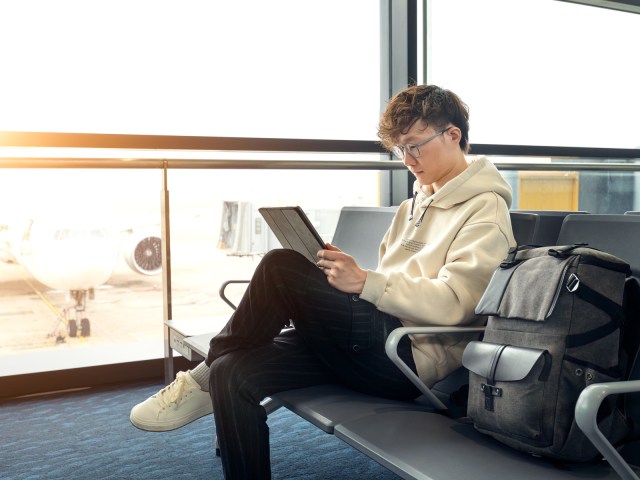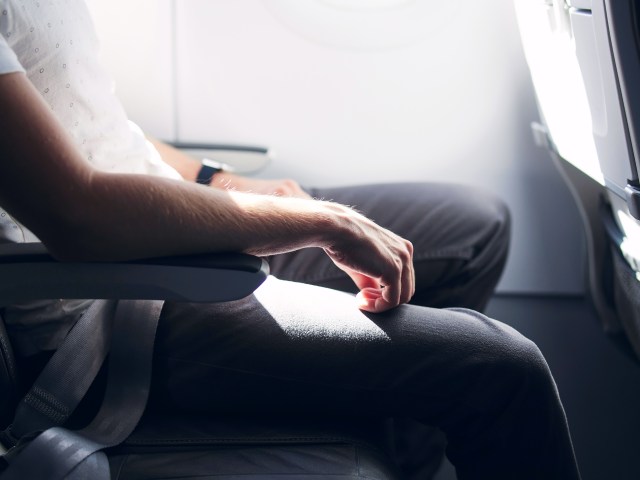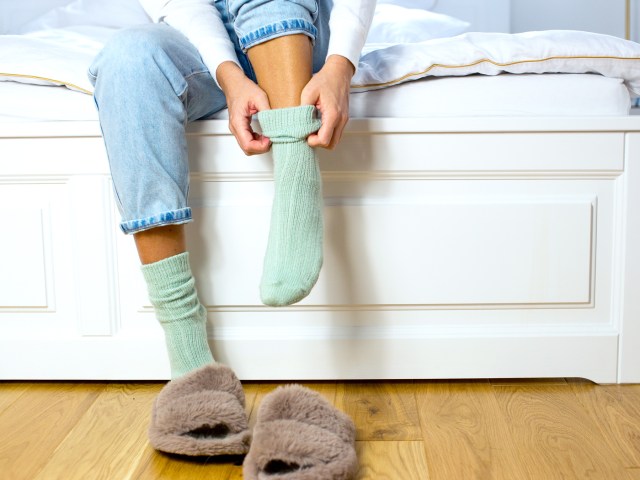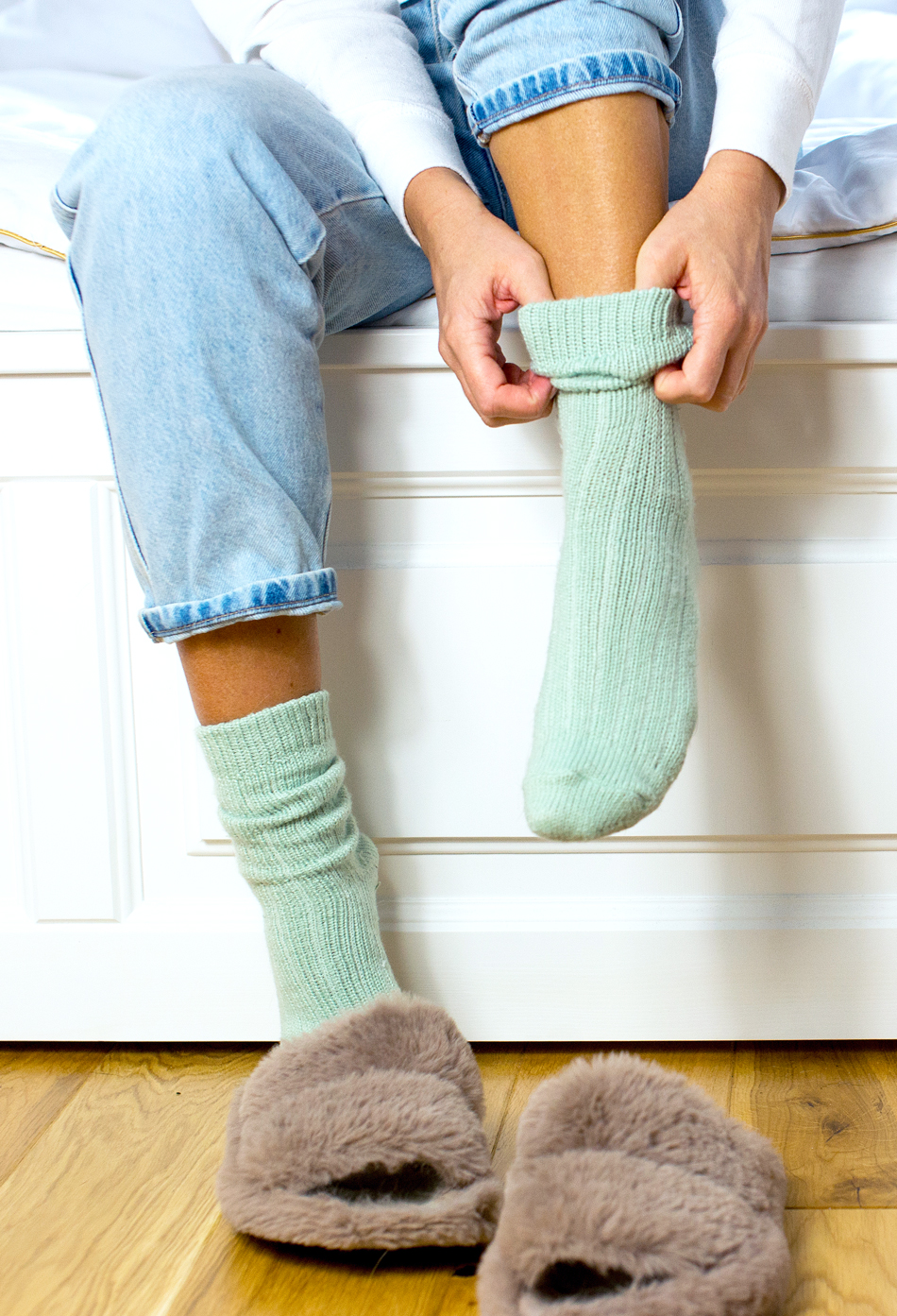Between tight seats and limited legroom, flying can often be an unpleasant experience. The physical toll that flying takes on the body is very real, especially on longer journeys. Fortunately, there are ways to mitigate that discomfort so you arrive at your destination feeling fresh and energized. One particularly helpful method involves wearing compression socks, which fit around the leg more tightly than regular socks. Compression socks provide a wide range of benefits for travelers — here’s why you should consider them for your next flight.
Air Travel Causes Circulation Issues

Being seated for long periods of time, whether on an airplane or elsewhere, may lead to circulatory issues that cause swelling, blood clots, and even deep vein thrombosis. While situations that require immediate medical attention are rare, many airline passengers regularly experience some level of leg discomfort during their journey. Airplane cabins are also highly pressurized, which means that passengers breathe in less oxygen; lower oxygen levels in the blood make clots more likely to form.
Who Should Wear Compression Socks?

You don’t have to suffer from circulation issues to enjoy the benefits of compression socks, but there are some circumstances in which wearing these socks is recommended. People aged 40 or older, for example, are at risk of worsening circulation and should consider compression stockings for their next trip. You also may be at increased risk of developing blood clots if you’ve had surgery within the last three months. Other at-risk groups include pregnant people, those with a BMI over 30, people with varicose veins, and anyone with a medical history of coronary or circulatory issues.
The Benefits of Wearing Compression Socks

Studies show that, thanks to their clever design, compression socks help improve blood flow and prevent conditions such as swelling and DVT. Compression socks are often made of a flexible fabric that forms a tight seal around the leg without being too restrictive. Many variations are also tighter around the ankles and loosen as they make their way up the calves, which encourages upward blood flow toward the heart. By wearing a pair, your legs are much less likely to feel achy and swollen once you disembark the plane, and the odds of developing related medical issues also decrease.
Pro tip: To ensure that compression socks are right for you, try them on before the day of your trip. Wear the socks a few days in advance and take them on a quick test run — that way, you can know if they work for you. Assuming the socks help lessen swelling and discomfort, you can change into the socks right before you board the plane to ensure a comfortable trip ahead.
The Risks of Wearing Compression Socks

Compression socks have a few risks one should be aware of. The socks may actually become too tight, to the point that they cut off circulation. If you feel too much pressure, just take them off and change into your normal socks. Also keep an eye out for any redness or chafing, as this could be a sign of an allergic reaction to the material. Lastly, if you have a condition such as diabetes or peripheral artery disease, check with a doctor before buying compression socks to ensure that it won’t make matters worse.
Different Types of Compression Socks

There are three common types of compression socks: graduated compression socks, nonmedical support hosiery, and anti-embolism stockings. The first type places additional pressure around the ankles and then tapers off as it runs up the leg. However, in many cases these graduated compression socks require a prescription and fitting, so you can’t just head to the store and grab a pair. Nonmedical support hosiery, available without a prescription, is more flexible and less restrictive. Anti-embolism stockings are designed for people at risk of DVT and those who suffer from limited mobility, and they also require getting a prescription from your doctor.
Recommended Compression Sock Brands

Choosing the right compression sock for you can be overwhelming, so here are a few of our favorites:
Sockwell: These stylish and durable women’s socks use a mix of fine merino wool and rayon, which will help you stay comfortable on long plane journeys.
Levsox: With a wide variety of vibrant colors available, these socks will not only keep you feeling good, but also make a bold fashion statement.
Bluemaple: These socks come highly recommended for pregnant women — or anyone looking for that added circulation boost. They’re even great for athletics and can be worn while running for help with circulation.
Comrad: Sold in either regular or wide-calf fits, these nylon, knee-high socks will conform to any leg shape and leave you feeling cozy and secure.
Dickies: If you’re looking for socks that are effective and simple, these socks may be for you. They come in a range of basic colors (such as white, black, and tan) and do a great job at maintaining proper circulation.
Note: All featured products and deals are selected independently and objectively by the author. Daily Passport may receive a share of sales via affiliate links in content.
More from our network
Daily Passport is part of Inbox Studio, which publishes content that uplifts, informs, and inspires.
























